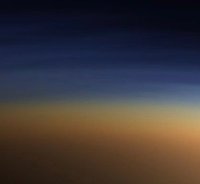
Observations of 14 N/ 15 N in HCN and N 2 in the atmosphere of Titan provides direct evidence of how photochemistry influences stable isotopes. We have used these observations to determine that Titan’s nitrogen originated as NH 3 in the protosolar nebula. All of this work relies on spacecraft-based observations made at Titan. Ground-based observations combined with spacecraft observations are also of high value. The lower limit observed for 14 N/ 15 N in HCN in Pluto’s atmosphere by ALMA combined with New Horizons observations of the atmospheric composition provides a valuable tool for determining the origin of nitrogen for Pluto if the influences of condensation and aerosol trapping on isotopes can be constrained for which work is ongoing. All of this work is relevant to a future Ice Giants mission to Neptune, where the same methods could be applied to Triton and combined with ALMA observations. Furthermore, a mission to Io that makes in situ observations of the isotopic composition of the atmosphere could provide important information about volatile loss and interior processes at Io, assuming production and loss processes can be well constrained. Finally, noble gas abundances have been an important tool for understanding the origin and evolution of volatiles in the terrestrial planet atmospheres. The recent measurement of cometary noble gas abundances provides important information on the composition of the icy bodies that contributed to the formation of the gas giants, providing constraints for future in situ measurements that should be made with an atmospheric probe.
 Getting Under Europa’s Skin
Getting Under Europa’s Skin Photosynthesis, a Planetary Revolution
Photosynthesis, a Planetary Revolution Xenon: King of the Gases
Xenon: King of the Gases When Molecules Matter: Phosphorus and Its Sources on the Early Earth
When Molecules Matter: Phosphorus and Its Sources on the Early Earth